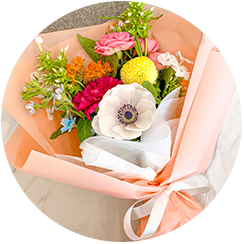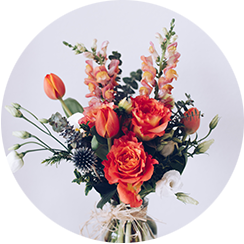Transform Your Flower Care Routine with These Steps
Posted on 25/05/2025
Transform Your Flower Care Routine with These Steps
Are you longing for vibrant blossoms, lush leaves, and healthy stems in your home or garden? Proper flower care is the answer. Whether you're new to keeping plants or are looking to enhance your flower care routine, this guide unveils the secrets to nurturing beautiful blooms from root to petal. Read on to revolutionize your approach and enjoy thriving flowers year-round!
Why Improving Your Flower Care Routine Matters
Caring for flowers isn't just about aesthetics. A good routine keeps your flowers healthier, extends their lifespan, reduces common issues like wilting, and gives you that burst of color and fragrance you crave. By transforming your flower care practices, you'll enjoy more resilient plants that flourish both indoors and outdoors.

Step 1: Choose the Right Flowers for Your Environment
The foundation for a successful flower care routine is choosing varieties suited to your home or garden's conditions. Understand the following before selecting your blooms:
- Sunlight Requirements: Identify whether your chosen flowers prefer full sun, partial shade, or low light.
- Climate Adaptation: Ensure the plants can thrive in your region's temperature and humidity.
- Soil Type: Some flowers need sandy soil, while others do well in loamy or clay-rich soils.
- Space and Arrangement: Account for the mature size of the flower and spacing needs for air circulation.
Tip: Conduct a quick audit of your gardening space to match plant needs to location. This step is crucial for optimal results!
Popular Choices for Beginners and Pros
- Sunflowers (require full sun, easy care)
- Roses (adaptable, but benefit from regular care)
- Lavender (low-water and high-light requirements)
- Orchids (prefer indirect sunlight, humidity)
- Tulips (cool climates, well-drained soil)
Step 2: Perfect Your Watering Technique
Watering is the heartbeat of any flower care routine. Both over-watering and under-watering can spell doom for your plants. Master these best practices:
- Check Soil Moisture: Insert your finger 1-2 inches deep. If it feels dry, it's time to water.
- Water Early: Water in the morning to reduce evaporation and allow leaves to dry, preventing disease.
- Deep, Infrequent Watering: Aim for thorough soaks rather than frequent light sprinkles. This encourages deep root growth.
- Avoid Wetting the Foliage: Direct water at the base of the plant to reduce fungal risks.
- Adjust Seasonally: Flower water needs vary. Hot months require more water, while dormant seasons need less.
Remember: Poor drainage is a common pitfall. Always use containers with drainage holes and never let plants sit in water.
Step 3: Proper Feeding--Fertilize for Results
Nutrient-rich soil is vital for healthy blooms and foliage. Here's how to supercharge your flower's nourishment regimen:
- Understand Fertilizer Types:
- Granular: Slow-release and ideal for garden beds.
- Liquid: Rapid absorption, great for indoor and outdoor potted plants.
- Organic: Compost or manure provides gradual, natural feeding.
- Follow Guidelines: Over-fertilizing can burn roots. Always use recommended dosages.
- Feed Regularly: Most flowers benefit from monthly feeding during active growth.
- Tailor to Each Plant: Some, like orchids, require specialized fertilizers. Do your research for each type.
Tip: Flush the soil occasionally with plain water to prevent salt build-up from fertilizers.
Step 4: Prune to Promote Health and Beauty
Pruning and deadheading don't just keep your flowers neat--they encourage more blooms and prevent disease. Follow these steps to refine your flower care routine:
- Deadhead Spent Blooms: Regularly remove wilted or dead flowers to stimulate new growth and extend blooming.
- Prune for Shape and Airflow: Trim away crossing, weak, or dense growth to boost air circulation and sunlight penetration.
- Sterilize Tools: Use clean, sharp scissors or shears to avoid infecting healthy plants.
- Time Pruning Right: Some flowers need pruning after blooming (e.g., lilacs), while others before growth starts (e.g., roses).
Don't Forget: Compost your plant cuttings for sustainable gardening!
Step 5: Pest and Disease Prevention
Even the best flower care routine can be undermined by pests or fungal infections. Proactively protect your plants with these smart strategies:
- Inspect Regularly: Check leaves (especially undersides) and stems for early signs of trouble like spots, holes, or sticky residue.
- Practice Good Hygiene: Remove fallen petals and debris from soil or pots.
- Natural Remedies: Use neem oil, insecticidal soap, or DIY sprays as a first defense against aphids and mites.
- Isolate Newcomers: Quarantine new plants for a week or two to avoid introducing pests.
- Improve Air Circulation: Well-spaced plants dry faster and suffer fewer fungal diseases.
If a problem persists, research specific treatments suited to your flower species and local conditions. Prompt action keeps your flower display looking its best.
Step 6: Optimize Potting and Repotting
For both indoor and container flowers, the potting process is critical. Periodic repotting reinvigorates their growth:
- Choose the Right Pot Size: Too-small pots restrict roots. Give rapidly growing flowers a pot at least 1-2 inches larger.
- Select Quality Potting Mix: Avoid garden soil; use mixes with good drainage and organic content.
- Repot on Schedule: Plants typically need fresh soil and more space every 1-2 years.
- Loosen Roots: Gently tease apart tangled roots during repotting to encourage outward growth.
Bonus: Consider self-watering pots for busy lifestyles--they offer steady, consistent moisture.
Step 7: Master the Art of Light Management
Light isn't just about sunlight versus shade. Manage each species' unique needs to truly transform your flower care routine:
- Rotate Indoor Plants: Ensure even growth and prevent one-sided leaning.
- Supplement with Grow Lights: During winter or in dim rooms, full-spectrum bulbs work wonders.
- Provide Shelter: In hot climates, use sheer curtains or shade cloth outdoors to filter harsh midday light.
- Observe and Adjust: Pale leaves may signal too much light, while leggy stems indicate a need for more.
Well-lit flowers produce the most vibrant colors and sturdy stems.
Step 8: Seasonal Flower Care Adjustments
A year-round flower care routine adapts to the changing demands of each season. Here's how to ensure thriving blooms whatever the weather:
Spring & Summer
- Increase watering and feeding as new growth surges.
- Mulch garden beds to retain moisture and block weeds.
- Monitor closely for pests as activity rises.
Autumn
- Prune summer-flowering species after their bloom period.
- Begin reducing water and fertilizer as plants enter dormancy.
- Bring sensitive pots indoors before the first frost.
Winter
- Limit watering--roots need less during cold or dormant periods.
- Clean up fallen leaves to prevent mold and unwanted critters.
- Use grow lights or sunny windows to maintain health indoors.
Step 9: Practice Sustainable Flower Care
Modern flower care routines benefit from eco-friendly practices. Transform your flower care approach with sustainability in mind:
- Collect Rainwater: Use for watering to save on utilities and minimize chemical exposure.
- Compost Waste: Recycle flower clippings and leaves as plant food.
- Choose Native Varieties: These adapt better and require fewer resources to thrive.
- Avoid Overuse of Chemicals: Opt for natural treatments and organic fertilizers whenever possible.
Green gardening is not only good for your flowers--it benefits your health and the environment too.
Extra Tips for a Gorgeous Flower Display
- Mix and Match: Combine flowers of different heights and bloom times for extended color.
- Use Mulch: Suppress weeds, retain moisture, and insulate roots.
- Accessorize: Add decorative stones, trellises, or garden art to showcase your blooms.
- Keep a Garden Journal: Track plant health and blooming patterns to perfect your routine year after year.

Frequently Asked Questions About Flower Care Routines
How often should I water my flowers?
It depends on the variety, season, and soil. Most flowers prefer soil that's consistently moist but not soggy. Test soil moisture as a guide, especially in changing weather.
What is the best fertilizer for flowers?
Choose a balanced fertilizer (like 10-10-10 NPK) for most blooms, but check whether your species needs extra nutrients--some love higher phosphorus or potassium for vibrant flowers.
Why are the leaves of my plant turning yellow?
Possible reasons are over-watering, under-watering, nutrient deficiencies, or pests. Ensure you observe your plants and adjust care accordingly.
How can I prevent fungal diseases?
Water in the morning, avoid wetting leaves, provide good air circulation, and remove debris to keep your plants healthy and disease-free.
When should I repot my flowers?
Repot when you notice roots escaping from drainage holes, slowed growth, or the plant outgrows its container--typically every 1-2 years for most species.
Conclusion: Elevate Your Flower Care to New Heights
By integrating these proven steps into your flower care routine, you'll unlock a more vibrant, flourishing, and rewarding display--indoors or out. Remember, consistency, observation, and adapting to your plants' changing needs are key to gardening success. Make every season a celebration of color and life--starting today!
Ready to transform your flower care routine? Start with one step, watch your blooms thrive, and fall in love with flower care all over again!
Latest Posts
Delight in the Beauty of Tulips with These 7 Surprises
Get the Most Out of Your Poinsettias This Season
A Colorful Ode to Peonies: Discovering Their Symbolic Meanings







